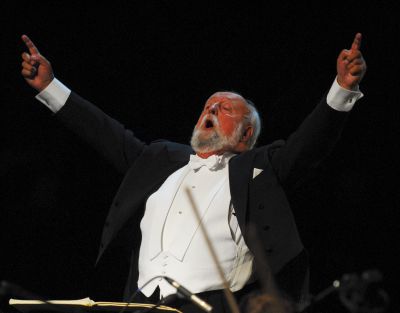Bronisław Huberman: From child prodigy to resistance fighter against National Socialism

Huberman’s popularity in Germany is also captured in portraits created between 1915 and 1921 by the Berlin-based painters and illustrators Emil Orlik (1870-1932, Fig. 5), Lesser Ury (1861-1931, Fig. 6) and Eugen Spiro (1874-1972). For twelve years, from 1923 onwards, he was accompanied by the Berlin-based pianist Siegfried Schultze (1897-1989), including on concert tours around the world. Musically, Huberman devoted himself to the great violin concertos and sonatas, but he also had a particular passion for chamber music. He performed trios and quartets with Artur Schnabel (1882-1951), Pablo Casals (1876-1973) and Paul Hindemith (1895-1963). In November 1926, playing with the Berlin Philharmonic Orchestra, he performed the premiere of the first violin concerto by the Polish composer Karol Szymanowski (1882-1937).
At the beginning of the 1920s, shaken by the political impact of the First World War, Huberman began to take an interest in global politics. Between 1920 and 1924 he spent the winter months on concert tours throughout the US where he believed that in the United States’ federal system with its economic prosperity, he had found the role model for a peaceful and united Europe. The impressions and experiences gained in North America led him to engage publicly for a federal and federally structured Europe, that is to say, a European federal state, which he referred to as Pan-Europe in line with the parlance of the day. From 1924, he became politically active in speeches and newspaper articles. He developed a close friendship with Coudenhove-Kalergi, who had been propagating the Pan-Europe idea since 1922 and had founded the Pan-Europe Union in 1924; a friendship which was to last until Huberman’s death. When an interview with Huberman appeared in the Berlin 8 Uhr-Abendblatt on 10 July 1925, Coudenhove-Kalergi wrote him a letter: “I am moved by the resoluteness with which you campaign for Pan-Europe.”[13] In his reply, Huberman was able to report that the Paris edition of the New York Herald “had reprinted the Berlin interview with a sensational layout.”[14] This was the start of a lively line of correspondence in which Huberman and Coudenhove-Kalergi discussed European policy issues, exchanged information and agreed travel plans so that they could arrange to meet.
In 1925, Huberman wrote a first paper on this issue entitled “Mein Weg zu Paneuropa”, which Coudenhove-Kalergi published in the second edition of the magazine Paneuropa and which evidently also appeared as a special edition.[15] As Huberman saw it, the priorities were the economic and health and welfare considerations that he had seen realised in the American Fordism of the 1920s, i.e. in the industrial production of goods using division of labour within a large, unified economic area. He believed that Europe was hampering itself by its particularism determined by customs borders. In the American role model, Huberman saw the realisation of a high level of economic productivity, relative prosperity in broad sectors of the population and a distinct patronage by individual affluent citizens that benefited education and culture, “an assessment, which – especially from today’s perspective – may appear idealistic or even marked by politically naive enthusiasm”, stated the political scientist Hans-Wolfgang Platzer (*1953), but “amongst contemporary US observers did not in any way occupy an outsider position”.[16]
[13] Letter from Coudenhove-Kalergi to Huberman dated 10 July 1925, Huberman Estate (see Note 1), cited from Platzer 2019 (see Literature), page 122
[14] Letter from Huberman to Coudenhove-Kalergi dated 21 July 1925, ibid
[15] For bibliographic information see His Own Papers
[16] Platzer 2019 (see Literature), page 80 f.












